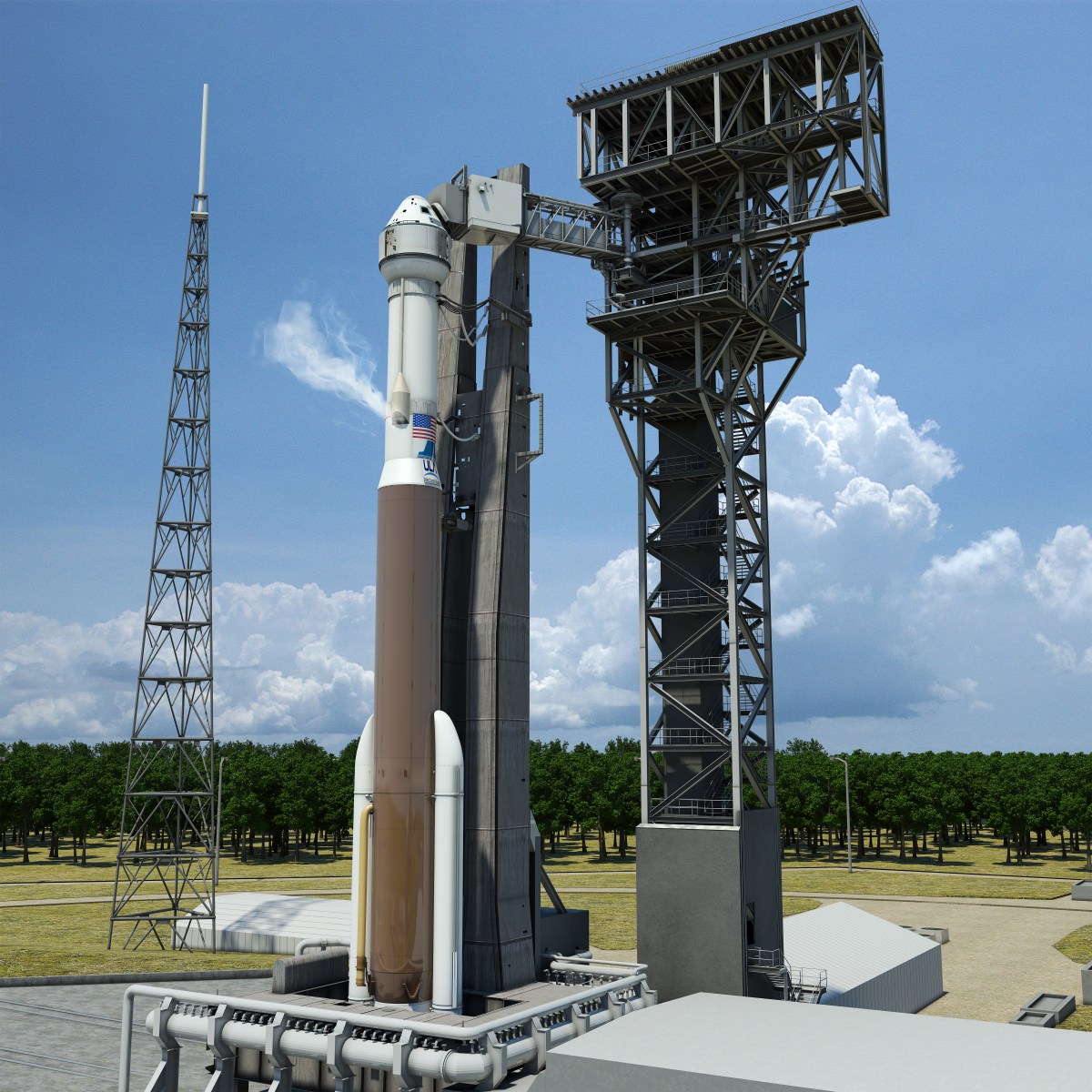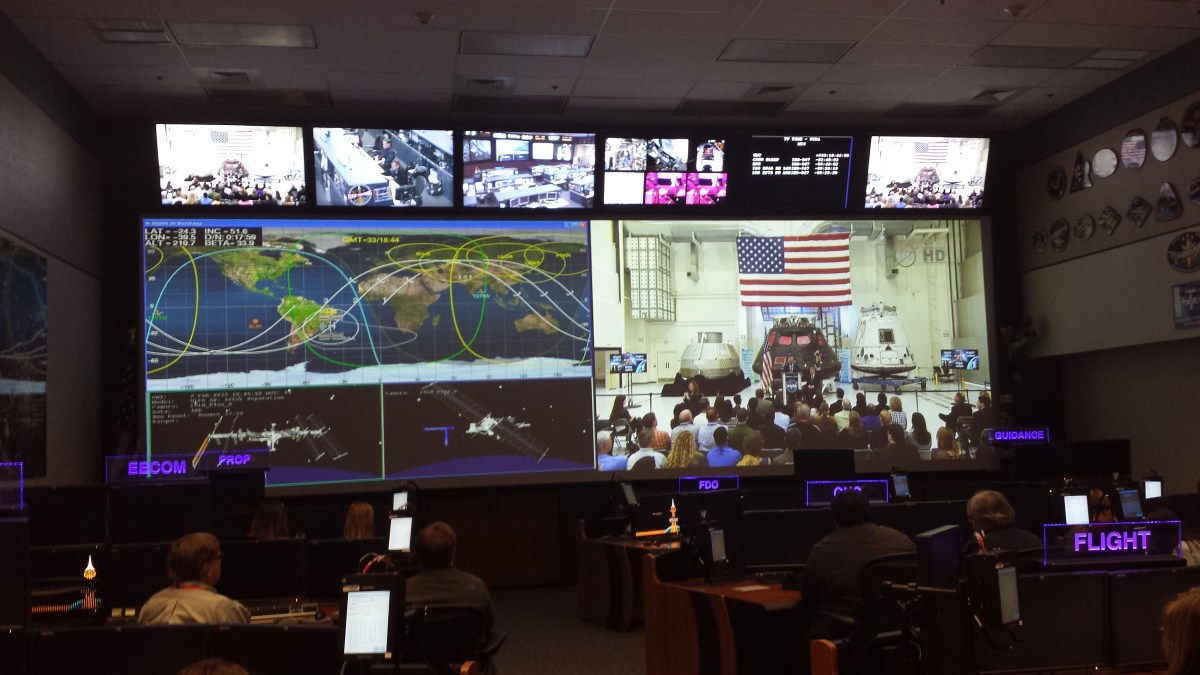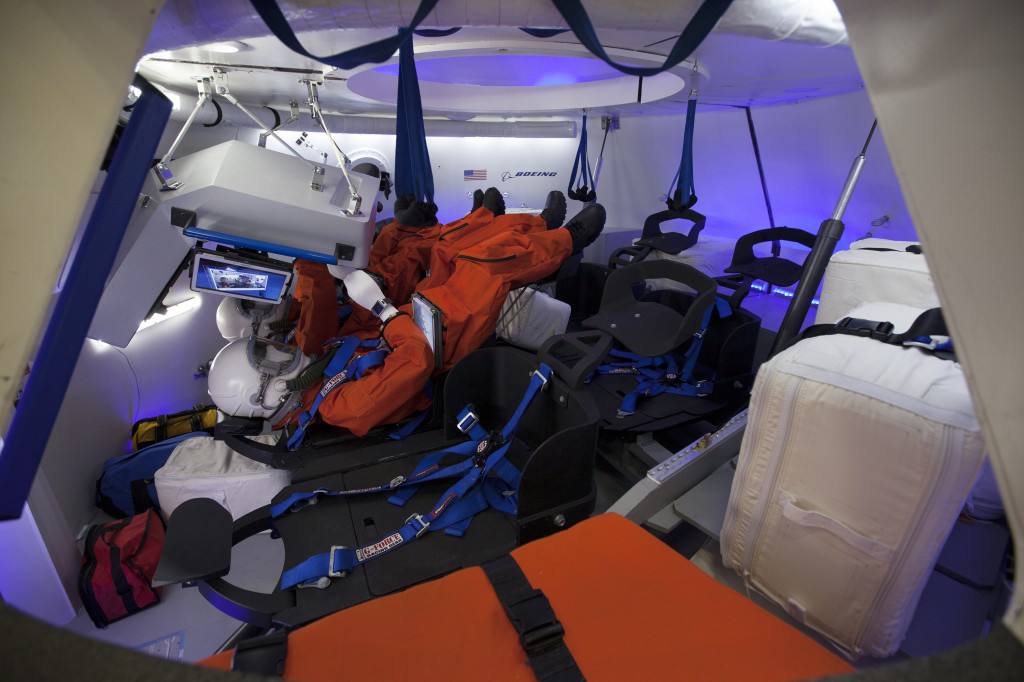Category: International Space Station
Spacewalks to Prep Station for Commercial Crew Spacecraft
A set of three spacewalks by astronauts on the International Space Station will focus on preparing the orbiting laboratory for the arrival in coming years of spacecraft under development by partners of NASA’s Commercial Crew Program. Astronauts Barry Whitmore and Terry Virts will perform the extravehicular activities, or EVAs, on Saturday, Wednesday and Sunday, March 1. The spacewalkers will prepare two of the ports on the station to receive two docking adapters that are compatible with the hatches of Boeing’s CST-100 and the SpaceX Crew Dragon. Those two spacecraft are scheduled to be built and flight-tested then certified in 2017 leading up to operational missions to take astronauts to the station. Boeing built the adapters, and a cargo-only version of the SpaceX Dragon will be used to take them to the station later this year.
In addition to regaining America’s ability to launch astronauts to the station from U.S. soil, the new spacecraft will expand the crew of the station to seven people, which will double the amount of time astronauts can devote to research work on the station.
Spacewalks are complicated endeavors calling for detailed choreography and careful planning. You can learn more about the spacewalks and everything involved with achieving the objectives in this briefing from earlier this week.
Commercial Crew’s Role in Kennedy’s New Era
Boeing Commercial Crew Access Tower Groundbreaking
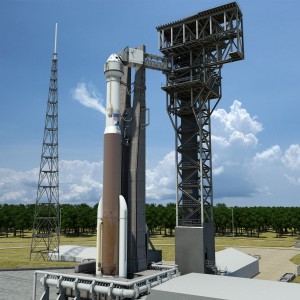 Boeing and United Launch Alliance (ULA) will mark the start of construction of the Commercial Crew access tower at Space Launch Complex 41(SLC-41) on Cape Canaveral Air Force Station, Florida at 2:30 p.m. EST Friday, Feb. 20. Media are invited to tour operations and attend the formal groundbreaking event.
Boeing and United Launch Alliance (ULA) will mark the start of construction of the Commercial Crew access tower at Space Launch Complex 41(SLC-41) on Cape Canaveral Air Force Station, Florida at 2:30 p.m. EST Friday, Feb. 20. Media are invited to tour operations and attend the formal groundbreaking event.
Groundbreaking participants include:
- John Mulholland, vice president of Boeing commercial programs
- Jim Sponnick, vice president of Atlas and Delta Programs at ULA
- Kathy Lueders, manager of NASA’s Commercial Crew Program
- Robert Cabana, director of NASA’s Kennedy Space Center in Florida
- Shawn Fairhurst, vice commander of the U.S. Air Force’s 45th Space Wing
- Jim Kuzma, chief operating officer for Space Florida
- Lynda Weatherman, president and chief executive officer of the Economic Development Commission of Florida’s Space Coast
The new crew access tower at SLC-41 will reach 200 feet in height and include an elevator, as well as means for quick evacuation from the structure in the event of an emergency. SLC-41 is one of the most active launch complexes on the Space Coast, so construction of this tower is scheduled to take place between launches, with segments of the structure being built off-site then assembled at the pad.
Under a Commercial Crew Transportation Capability (CCtCap) contract with NASA, Boeing’s Crew Space Transportation (CST)-100 spacecraft, currently in development, will be certified by NASA’s Commercial Crew Program to fly crews to and from the International Space Station. The spacecraft will launch on a ULA Atlas V rocket from SLC-41.
Read the details: http://go.nasa.gov/1zSvye1
AstroViews: Jeanette Epps
State of NASA From Houston

 Last week, NASA Administrator Charles Bolden delivered his annual State of NASA address from Kennedy Space Center in Florida to audiences at centers across the agency. The speech was even broadcast to a control room at Mission Control at Johnson Space Center in Houston. Kennedy and Johnson will work closely in developing and flying the next generation of human spacecraft for the Commercial Crew Program.
Last week, NASA Administrator Charles Bolden delivered his annual State of NASA address from Kennedy Space Center in Florida to audiences at centers across the agency. The speech was even broadcast to a control room at Mission Control at Johnson Space Center in Houston. Kennedy and Johnson will work closely in developing and flying the next generation of human spacecraft for the Commercial Crew Program.
New Details: Boeing’s Crew Transportation System
- The Atlas V that will launch the first CST-100 flight test – uncrewed – will be the 76th mission for the Altas V family. The first flight test with a test pilot and astronaut aboard will fly on the 80th Atlas V mission. Both missions have been placed on the United Launch Alliance manifest.
- Boeing plans these two flight tests for its CST-100 vehicle in addition to extensive component and systems testing already completed in the development program.
- Work to build the Crew Access Tower at Space Launch Complex 41 at Cape Canaveral Air Force Station in Florida is already underway. The tower is needed to meet the requirements of a human-rated launch pad.
 The CST-100 will conduct a pad abort test in early 2017 to show the effectiveness of the spacecraft’s launch abort system or LAS.
The CST-100 will conduct a pad abort test in early 2017 to show the effectiveness of the spacecraft’s launch abort system or LAS.- A flight test completing a full orbital mission profile will be flown in mid-2017, with the CST-100 flying on an Atlas V into space.
- Mid 2017 is also the timeframe for the flight test that will include a Boeing test pilot and an astronaut. The spacecraft will visit the station in a demonstration of the complete crew transportation system.
Inside KSC Features Commercial Crew Event
Watch a short recap of this week’s Commercial Crew Program news in this week’s episode of Inside KSC! Kennedy is the home of the Commercial Crew Program and the launch site of the systems now in development by Boeing and SpaceX that will carry NASA astronauts to the International Space Station in 2017.
Setting Up Future Flights
NASA’s Commercial Crew Program partners laid out their plans Monday for flights tests leading up to operational missions taking astronauts to the International Space Station. Both Boeing and SpaceX anticipate uncrewed flight tests followed by crewed flight tests with at least one NASA astronaut aboard the CST-100 and Crew Dragon spacecraft, respectively. After their systems are certified by NASA, they will begin transporting crews to the station. Because of lead time requirements established by the companies in their proposals, they will receive what is known as Authority to Proceed (ATP) when they have met established development-related criteria, and NASA has determined the need for a mission. The Authority to Proceed marks the start of lead time needed to purchase hardware and process their systems for those missions. Boeing may receive the Authority to Proceed before SpaceX, though that does not necessarily mean that Boeing’s CST-100 will fly before the SpaceX Crew Dragon.
SpaceX Pad Abort Test Article Readied For Flight
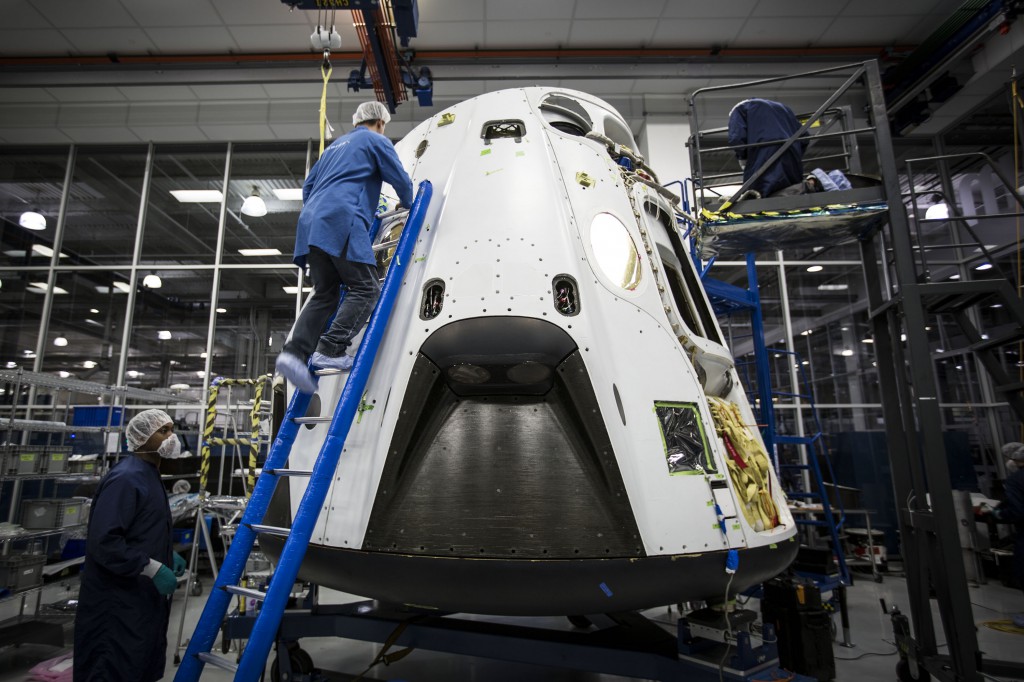 SpaceX is preparing a test version of its Crew Dragon for an upcoming flight that will simulate an emergency abort from the launch pad. The Crew Dragon is designed to carry astronauts to the International Space Station, and the ability to abort from a launch or pad emergency and safely carry crew members out of harm’s way is a critical element for NASA’s next generation of crewed spacecraft. The pad abort test will take place from Cape Canaveral Air Force Station’s Space Launch Complex 40 in under its Commercial Crew Integrated Capability (CCiCap) agreement with NASA, but some data gathered during the development flight will be critical for the company as it continues on the path to certification.
SpaceX is preparing a test version of its Crew Dragon for an upcoming flight that will simulate an emergency abort from the launch pad. The Crew Dragon is designed to carry astronauts to the International Space Station, and the ability to abort from a launch or pad emergency and safely carry crew members out of harm’s way is a critical element for NASA’s next generation of crewed spacecraft. The pad abort test will take place from Cape Canaveral Air Force Station’s Space Launch Complex 40 in under its Commercial Crew Integrated Capability (CCiCap) agreement with NASA, but some data gathered during the development flight will be critical for the company as it continues on the path to certification.

